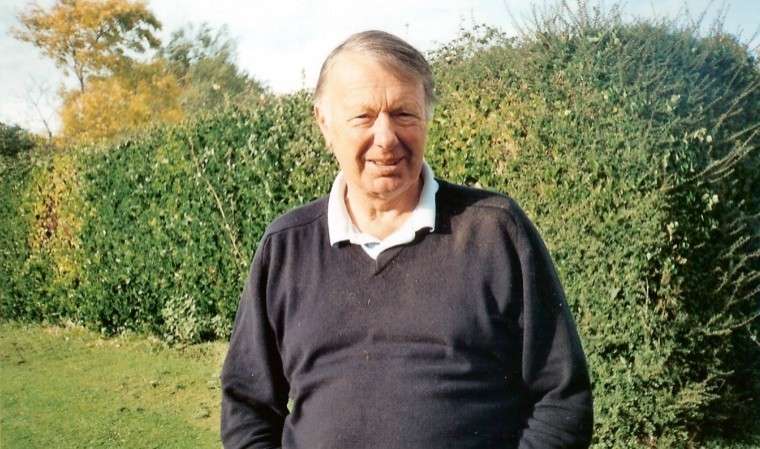The farm’s main tasks until the new year are, apart from the routine cattle work, almost done. The arable side slips quietly out of mind for another 12 weeks, so apart from any emergencies, things are mainly occupied with seasonal matters. These stir a lifetime’s memories invoked by times of family and friends – sadly mostly old ones, indeed pretty much all long gone into the mists of time. But they are not forgotten.
In my own youth, the Christmas holiday – then but two days – just meant hard toil well into Christmas Eve. In often wet and cold conditions, we were out in the fields, perhaps pulling or loading fodder beet or mangolds direct from the ground or a clamp to be brought back to the farmstead on small wooden dung carts, behind a horse or an old Fordson. The roots were individually pulled and knocked clean of soil before being fed into a root cutter for feeding out fresh each day with barrows and shovels to the dairy cows. We simply didn’t know any different because these jobs had been done in similar fashion since time immemorial. Farming modernisation was still yet to take off. We worked a basic 48 hour week, from 7am until 5pm, less a total hour and a half off for “tenners” and lunch. This regime included Saturday morning.
Regardless of the weather, we went out into a forest of marrowstem kale, armed with an old plastic fertiliser bag over the top of our shirts to keep the worst of the wet or frost out before, with “faghook” in hand, bending down to gather and cut off the huge stems of kale, lifting it straight onto a flat trailer from both sides to make up a full load. Then we returned to the buildings and feeding through an old Barford straw cutter, run off the tractor pulley. We usually worked in pairs, mainly boys but sometimes with a man, to keep us up to the mark.
Then, as it was chopped, the fodder was moved by shovels onto big piles, enough to last the herd through the holiday. On Christmas Eve we were told “when the job is done you can knock off early” to help get ready for the festivities. But, even with that incentive, we often didn’t get done until after darkness fell.
All the food was put out twice a day, fed along the rails of the cow yards where the animals would eagerly devour it. Perhaps there were roots for the morning meal and kale for the evening, sometimes dyed feed spuds. The cowmen did the bedding up, but held back from helping us too much! This was in the days before silage. Such operations put me off the whole idea of festivities for many years: indeed, they still colour Christmas to this day.
Then on Boxing Day, we had the day off treat beating for our seniors on the annual Boxing Day shoot through all those same fields of roots or wet freezing kale, to ensure the wild pheasants and partridge flew straight and high over the elms to the guns beyond. Day off my foot! Then, after the sport was finished, there was barrowing the food to the herd again.
This was in the late fifties, when winter farm life centred round the milking herd whose reliable income was probably more important to us – and most dairy farming families – than anything, so took priority. And such attitudes have, to a great extent, stuck. Last month my long standing (25 years) stockman, Wally Elvin, after a difficult year, flew off for a well deserved holiday while I was left responsible for his animals. One wet early morning, before first light, my wife said: “Don’t you want to have breakfast before you go out?” to which my instinctive answer was “Not until they are all seen and fed.” This was a hangover from 50 plus years ago. I hope today’s young stockmen might react the same way.
So Christmas and new year would pass, all those years ago, in similar manner, busy but peaceful. All this changed around 1957 however when I obtained a driving licence and was lent a little red Morris Tourer from a neighbour. It didn’t change Christmas a lot, although it did open up new horizons. The local sports club for a game of squash and a beer, days when a ten shilling note would last the week, at 8p a half. Those were the days… when, like many farmers’ sons, all I was paid was the money from father’s pocket , and often that wasn’t a lot. This was not to improve much for another ten years, until my bride and I married.
Meanwhile, as spring days lengthened, cricket, tennis and then golf beckoned – at least when overtime, hoeing, haymaking or bale cart didn’t demand my full attention. As an 18 year old teenager I was by then well trained by my Father as to where my priorities lay. And then, in the Swinging Sixties, along came girls. Some great times yes, tough, but very memorable, although the only real sadness is that the people I made that journey with, learning the disciplines of farming life and its responsibilities, are no longer around to share them.
These then are just a taste of those days, the endless work, the simple ways of country life. I don’t think it hindered our development, or our friendships but the speed with which it has slipped into the memory is quite shattering. None these days will have the opportunity to experience something similar. Yet I can tell you, it did make men of those who experienced it.




